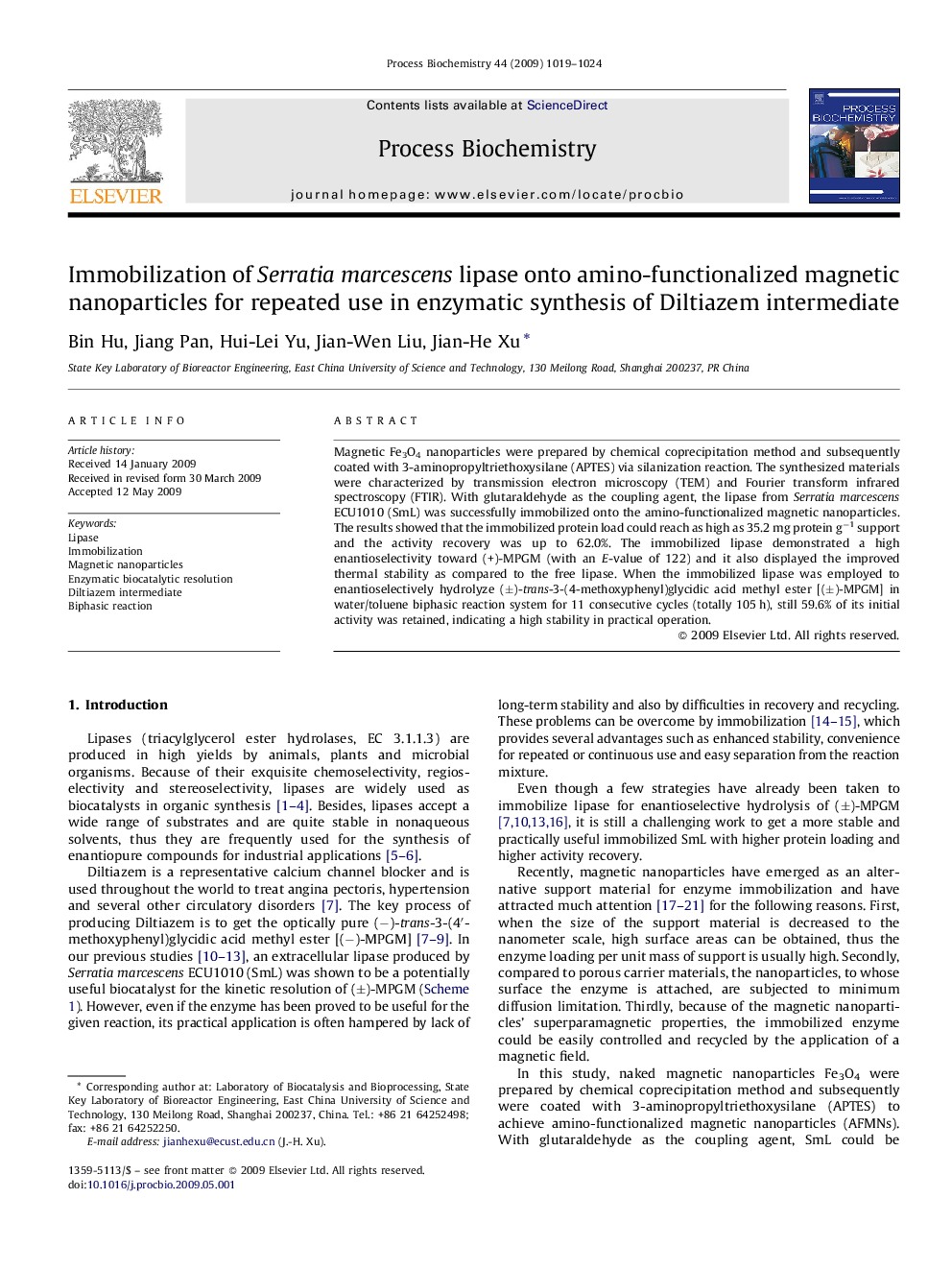| Article ID | Journal | Published Year | Pages | File Type |
|---|---|---|---|---|
| 35340 | Process Biochemistry | 2009 | 6 Pages |
Magnetic Fe3O4 nanoparticles were prepared by chemical coprecipitation method and subsequently coated with 3-aminopropyltriethoxysilane (APTES) via silanization reaction. The synthesized materials were characterized by transmission electron microscopy (TEM) and Fourier transform infrared spectroscopy (FTIR). With glutaraldehyde as the coupling agent, the lipase from Serratia marcescens ECU1010 (SmL) was successfully immobilized onto the amino-functionalized magnetic nanoparticles. The results showed that the immobilized protein load could reach as high as 35.2 mg protein g−1 support and the activity recovery was up to 62.0%. The immobilized lipase demonstrated a high enantioselectivity toward (+)-MPGM (with an E-value of 122) and it also displayed the improved thermal stability as compared to the free lipase. When the immobilized lipase was employed to enantioselectively hydrolyze (±)-trans-3-(4-methoxyphenyl)glycidic acid methyl ester [(±)-MPGM] in water/toluene biphasic reaction system for 11 consecutive cycles (totally 105 h), still 59.6% of its initial activity was retained, indicating a high stability in practical operation.
